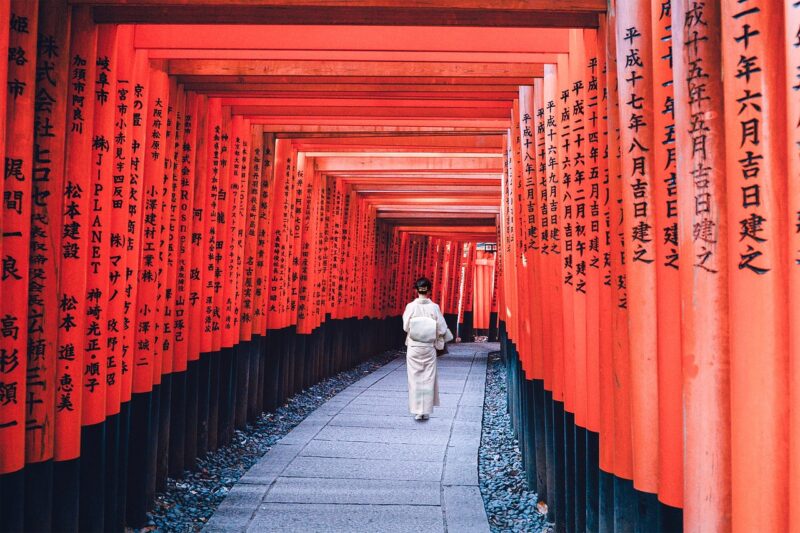
Japanese art has long been celebrated for its unique aesthetics, intricate designs, and the profound narratives often woven into its creations. Over the decades, this rich artistic tradition has inspired countless creators, most notably in the realm of Western comics. The exploration of how Japanese art influences Western comics is a fascinating journey through time, culture, and creativity, showcasing the intricate threads that weave these two distinct art forms together.
1. Historical Context: The Beginning of Cross-Cultural Influences
The dialogue between Japanese art and Western comics began in earnest during the late 19th and early 20th centuries, a period characterized by significant cultural exchange driven by globalization. Artists and writers from the West encountered Ukiyo-e prints – woodblock prints that depicted landscapes, kabuki actors, and beautiful women – which heavily influenced the evolution of Western visual storytelling.
Japanese art offered Western creators new perspectives in composition, storytelling, and the emotional depth of characters. The bold lines, vivid colors, and dynamic poses of Japanese printmaking and painting can be seen reflected in the works of early comic artists like Winsor McCay, best known for his strip “Little Nemo in Slumberland.”
2. Visual Styles: Line Work and Color Palettes
One of the most apparent influences of Japanese art on Western comics is the use of line work and color. Japanese artists often employ fine lines to create intricate details while simultaneously using bold strokes for dramatic effect. This was groundbreaking for early comic creators, who adopted these techniques to create more lifelike, expressive characters.
Moreover, the color palettes of traditional Japanese paintings, characterized by their careful balance and harmony, have inspired Western comic artists to explore a broader range of colors beyond the typical primary and secondary palettes. The famous artist Hokusai exemplified this style, and his mesmerizing waves inspired various comic illustrations, resulting in fluid and vibrant scenes that capture movement and energy.
3. Narrative Techniques: The Art of Storytelling
Japanese art has also impacted narrative structures and storytelling in Western comics. Manga’s unique approach to pacing and paneling has revolutionized how stories are told in comic form. For instance, the use of large, expressive illustrations interspersed with dialogue mirrors traditional Japanese scroll painting, which combines art and text to tell cohesive stories.
One of the most notable examples of this influence is observed in the works of artists like Frank Miller, who adopted manga-style storytelling techniques in his groundbreaking titles such as “Sin City” and “300.” The juxtaposition of images and text, along with dramatic angles and dynamic layouts, highlights the impact of Japanese art on narrative delivery in Western comics.
4. The Rise of Manga and Its Impact on Western Comics
With the rise of manga in popularity during the late 20th and early 21st centuries, Western comic artists began to draw heavily from its stylistic and thematic elements. Series such as “Naruto,” “One Piece,” and “Attack on Titan” not only garnered vast audiences in Japan but also saw enormous success in the West, leading to a new appreciation of manga among Western creators.
Many Western artists, including Scott Pilgrim creator Bryan Lee O’Malley, have cited manga as a crucial influence in their work. Aspects such as exaggerated facial expressions, dynamic action sequences, and whimsical fantasy have enhanced the diversity and creativity within Western comics, promoting hybrid styles that combine the best of both worlds.
5. Thematic Exploration: From Shojo to Seinen
Japanese comics encompass a wide range of themes and genres that also gained traction in Western storytelling. Shojo (girl’s) and Seinen (young men’s) manga offer explorations of romance, relationships, and nuanced character developments that were less common in traditional Western comics for many years.
This shift is evident in titles such as “Saga” by Brian K. Vaughan and Fiona Staples, which blends science fiction with rich character explorations, along with heartfelt emotional arcs reminiscent of shojo narratives. As a result, Western comics have started to embrace themes such as gender identity, mental health, and interpersonal relationships, paralleling the depth found in Japanese manga.
6. Collaboration and Fusion: Bridging Cultures through Art
In recent years, we have witnessed an increase in collaboration between Western and Japanese artists, resulting in a creative fusion that enhances the comic landscape. Projects like the graphic novel series “Shutter” by Joe Keatinge and Leila Del Duca feature cross-cultural influences, incorporating stylistic elements from both Japanese manga and Western comics seamlessly.
Furthermore, many Western creators travel to Japan to further immerse themselves in the art form and learn directly from creators there, establishing a profound connection that continues to promote artistic evolution. Formats such as graphic novels have transcended borders, showcasing a blend of cultural influences that enrich storytelling across the globe.
Conclusion: A Lasting Legacy
The influence of Japanese art on Western comics is a rich tapestry of historical interactions, aesthetic borrowings, and narrative innovations. As global boundaries continue to blur and the exchange of ideas thrives in the digital age, the impact of Japanese art will likely endure, continually inspiring new generations of comic artists and writers in the West. This cross-cultural dialogue demonstrates the ability of art to transcend boundaries, bringing together diverse storytelling traditions into exciting new realms of creativity.
As we move forward, the relationship between Japanese art and Western comics will only grow stronger, leaving an indelible impression on the future of visual storytelling.







